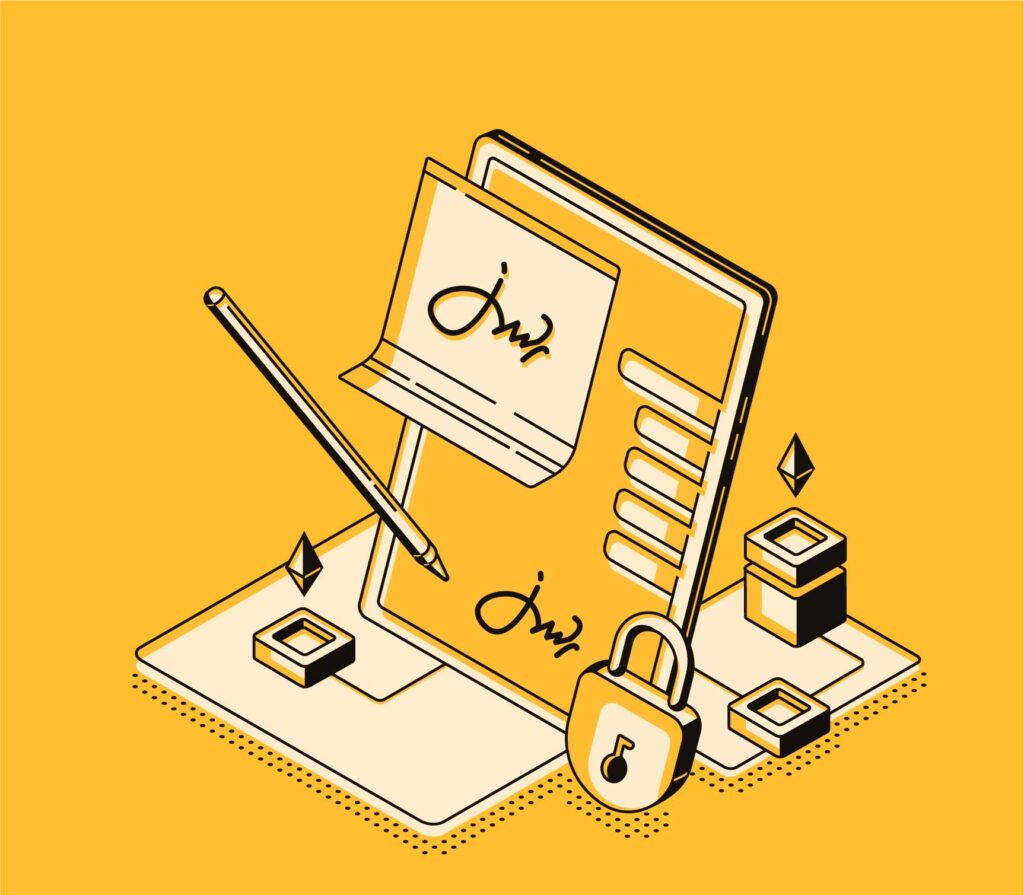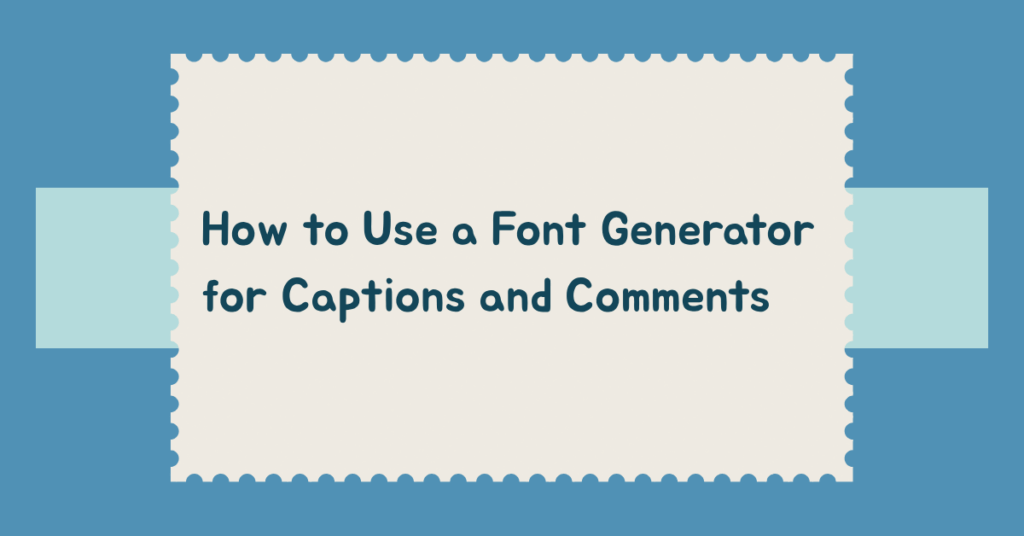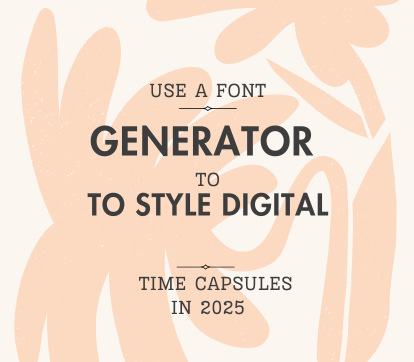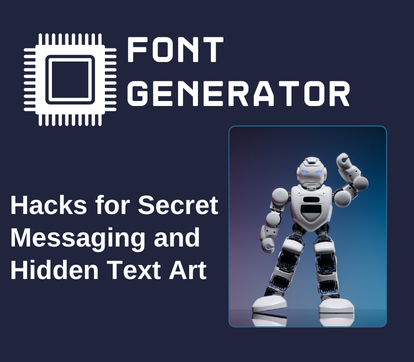Tattoos are personal, permanent, and powerful. As summer 2025 unfolds, a fascinating new ritual is emerging before the needle ever touches the skin: font testing. This isn’t just a design tweak — it’s now a cultural pre-step, especially popular among Gen Z and tattoo enthusiasts who are taking matters into their own hands. They aren’t just browsing Pinterest boards; they’re crafting, customizing, and finalizing their ideal ink using a font generator first.
From elegant scripts to aggressive blackletter forms, digital typography tools have become central in shaping what people want their tattoos to look like. Fonts now carry deeper weight in tattoos, giving context to names, dates, or mantras. And with such tools only a few clicks away, it’s no wonder this practice is dominating the creative pre-ink scene.
For many, this shift isn’t just about convenience — it’s about getting it right. And that’s where a font changer becomes more than just a novelty.
Why Fonts Matter More Than Ever in Tattoo Culture
The choice of font in a tattoo used to be a quick afterthought — a stylistic decision made at the parlor. But now, people spend hours, even days, testing different styles using online platforms. They want the font to reflect not just the words, but the sentiment, the backstory, and the emotion behind their ink. And this new attention to type is transforming the tattoo selection process.
Instead of picking fonts blindly from an outdated flash sheet, users are now exploring custom designs using a fancy text generator to play with their ideas at home. Whether it’s a minimalistic quote on the wrist or an elaborate chest piece, fonts define how that art is perceived. Serif can feel timeless. Gothic? Rebellious. A soft script might say vulnerability. These differences are more than aesthetic—they’re symbolic.
Tattoo artists are welcoming the shift, too. When a client walks in with a preview made using a font copy and paste tool, it speeds up the workflow and reduces miscommunication. Artists can replicate the exact style, line thickness, and spacing without reinterpreting a vague description.
How Font Testing Tools Are Replacing Traditional Sketches
Tattoos are no longer limited to the artist’s sketchpad. Today, users are designing tattoos using font previews from their phones or laptops. They build their design with a fancy font generator, screenshot, or save it, and then present it to their tattooist. That process replaces multiple rounds of sketching, edits, and back-and-forths. It’s a fast-forward button for visual communication.
Font tools let users compare similar styles side-by-side—say, a script versus a calligraphic version of a name. With a cool font generator, they can try three different variations instantly. That saves time and helps in making clearer decisions. Instead of hoping the final tattoo matches their vision, users now walk in knowing exactly what they want.
When someone wants a phrase inked on their collarbone or ribcage, the font’s readability and flow over skin curvature matter deeply. Many are even using text-to-image previews on arm or chest photos to simulate how the font would look on their body.
Why Young People Are Using Font Generators Before Getting Inked
In 2025, tattoo culture isn’t just for rebels. It’s become a deeply expressive and emotional act. That’s especially true for Gen Z, who value both individuality and digital control. They don’t just want to be tattooed; they want to direct the entire visual experience.
Using a font maker gives them that power. They aren’t tied to what the artist offers — instead, they’re bringing their artistic flair to the process. A small quote from a favorite book, the name of a lost loved one, or a lyric that defines a season of life — it all starts with selecting the perfect type.
By using a fancy text maker, they can romanticize a phrase without worrying it’ll be misaligned or poorly chosen. It’s like getting a second opinion — not from a person, but from the aesthetic reflection they see on the screen.
The Rise of Copy-and-Paste Fonts in Tattoo Planning
One major feature making this process even easier is the font generator copy and paste function. You no longer need to screenshot and crop. You simply type, copy, and paste it directly into your design file, or share it with your artist via Instagram or text.
With this simplified approach, many people feel more confident exploring more unique and uncommon typefaces. These aren’t your average “Times New Roman” tattoos. They’re stylized, dramatic, and often imported straight from a font generator free tool without any additional graphic design skills required.
Even minimalist tattoos have seen an upgrade thanks to this. Clean, symmetrical words with precision spacing can be created using advanced generators and pasted into design previews with zero distortion.
How Handwritten Fonts Are Gaining Popularity Through Tools
There’s also been a spike in demand for more emotional, raw-looking fonts, particularly those that look handwritten. This aesthetic feels more vulnerable, more human. Thanks to handwritten font generator copy paste options, users can now get that rough, imperfect charm that once required a custom brush pen or special commission.
People looking to honor family, remember a moment, or commemorate a loved one often prefer this softer font style. And since not everyone has beautiful penmanship, these digital handwriting emulators fill that gap perfectly.
Artists can then translate these samples into stencils almost instantly. It also gives clients a sense of control, especially when the font resembles a personal journal or letter style they resonate with.
Fonts That Look Better Inked: What to Look for Before You Decide
Not every digital font translates well to the human body. What works in high resolution on screen can look muddy once applied to skin. Thin lines fade faster, and overly curly fonts might blur. That’s why people often use a fancy font generator to test what looks clean, bold, and stable in size, especially on curved or sensitive areas.
The legibility test is key. If you can’t read the font from an arm’s length on a mock-up, it’s unlikely to hold up on skin. This is especially crucial for smaller tattoos, where the font must be crisp and resistant to aging.
Instead of relying on just trial and error, modern ink lovers are turning to platforms like this font generator to simulate those choices in advance and get one step closer to the perfect design.
Creative Tattoo Scripts Emerging in Summer 2025
This summer has brought an explosion of font-inspired tattoos. Some of the most popular designs include vintage typewriter styles, dreamy cursive fonts, and all-uppercase minimalist texts. These are all being tested in advance with a cool font generator to make sure they balance aesthetic appeal and clarity.
On TikTok and Reddit threads, people are even sharing their generator-to-tattoo journeys — from first typing out the phrase using a font copy and paste tool, to the stencil stage, and finally to the finished tattoo. This transparency has encouraged more people to try the DIY layout process for themselves.
Even professional tattoo artists are getting in on it, using generators to save time on font sketching during consultations. The shared language between client and artist starts with the font itself.
Why Font Personalization Feels Like Part of the Tattoo Process
People don’t just want art on their body — they want their story. And that story often starts with choosing the perfect visual language. By using a fancy text maker, they’re beginning their tattoo journey before booking an appointment.
The act of choosing, customizing, and testing fonts becomes as meaningful as choosing the tattoo idea itself. It adds a digital ritual to the emotional ritual of being inked. Each font carries weight, and when it aligns with the message, the tattoo becomes timeless.
With platforms offering font generator free access, more people than ever are taking this process seriously. It’s not just about looking cool — it’s about getting it right the first time.
FAQs
Can I use font generators to design my tattoo?
Yes, they’re great for testing styles, readability, and layout before getting tattooed.
Do tattoo artists accept font designs from online tools?
Most artists are happy to work with designs from reputable font generators.
Which font types work best for small tattoos?
Bold, clean fonts with minimal curls or thin lines are ideal for clarity and longevity.
Are font generators free to use for tattoo design?
Many offer free access with enough features for tattoo preview and download.
What’s the benefit of using a font copy and paste tool?
It makes sharing and editing your preferred design easier across devices and apps.



